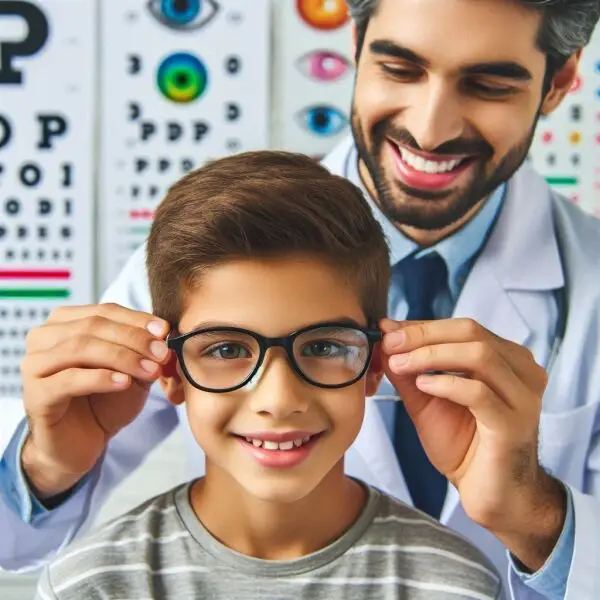Alert! More and more children need glasses: what is happening?
Attention! Myopia in children is alarmingly increasing: one third already wears glasses. Lockdown and screens are to blame. What to do about it?...
Table of Contents
- The Rise of Screens and Myopia: An Unexpected Duo
- A Lifestyle that Does Not Help
- A Growing Global Problem
- What Can We Do?
Follow Patricia Alegsa on Pinterest!
The Rise of Screens and Myopia: An Unexpected Duo
Have you noticed how much time we spend glued to our screens? During the pandemic, this became almost an extreme sport. Classrooms emptied, and electronic devices became the new teachers. As this happened, experts began to raise their voices about a phenomenon that cannot be ignored: the alarming increase in myopia among children. What is happening?
Myopia, that condition in which distant objects appear as a blurry puzzle, has skyrocketed. Nowadays, one third of children already suffer from it, and projections indicate that by 2050, more than half of the world's population could face this visual challenge. Can you imagine a world where most people wear glasses? It would be like a glasses convention on every corner!
A Lifestyle that Does Not Help
It is not just about the lack of physical activity. The pandemic has accentuated a sedentary lifestyle. Children are not only locked up at home, but they are also looking at screens from short distances for hours. Studies have shown that outdoor time is crucial. In fact, specialists suggest that at least two hours a day of outdoor activities can work wonders for visual health.
Can you imagine children running and playing outside instead of being cooped up at home? It would be like a return to the childhood of the 90s. However, in many places, especially in East Asia, the education system and school pressure have limited those opportunities. In countries like Japan and South Korea, myopia rates reach alarming figures, while in nations like Paraguay and Uganda, the problem barely appears.
A Growing Global Problem
Myopia not only affects children, but it has also become a public health issue. The World Health Organization warns that by 2050, the number of myopia cases among children and adolescents could exceed 740 million. This means that if we do not act now, we could be facing a visual epidemic.
And what's worse, hyperopia seems to be lurking. While myopia makes it difficult to see far away, hyperopia makes nearby objects a challenge. Both conditions are caused by an abnormal curvature of the cornea, but do we really need more visual problems in the world?
What Can We Do?
It is time to act. Ophthalmologists suggest limiting the time spent on electronic devices and encouraging regular breaks. The 20-20-20 rule is a good practice: every 20 minutes, look at something 20 feet (6 meters) away for 20 seconds. Let’s see if you can do it without cheating!
For children who already show signs of myopia, there are special lenses that can help slow its progression. However, not everyone has access to these treatments, which raises a concerning inequality.
In summary, the rise in myopia is a reminder that our daily actions matter. From encouraging outdoor activities to limiting screen time, every small change can make a difference. So how about we organize a trip to the park this weekend? Let's give our eyes the well-deserved break they need!
Subscribe to the free weekly horoscope
Aquarius Aries Cancer Capricorn Gemini Leo Libra Pisces Sagittarius Scorpio Taurus Virgo
I am Patricia Alegsa
I have been writing horoscope and self-help articles professionally for over 20 years.
Subscribe to the free weekly horoscope
Receive weekly in your email the horoscope and our new articles on love, family, work, dreams and more news. We do NOT send spam.
Astral and numerological analysis
-
 Discover your future, secret personality traits and how to improve in love, business and life in general
Discover your future, secret personality traits and how to improve in love, business and life in general
-
 Online Dream Interpreter: with artificial intelligence
Do you want to know what a dream you had means? Discover the power of understanding your dreams with our advanced online dream interpreter using artificial intelligence that responds to you in seconds.
Online Dream Interpreter: with artificial intelligence
Do you want to know what a dream you had means? Discover the power of understanding your dreams with our advanced online dream interpreter using artificial intelligence that responds to you in seconds.

















